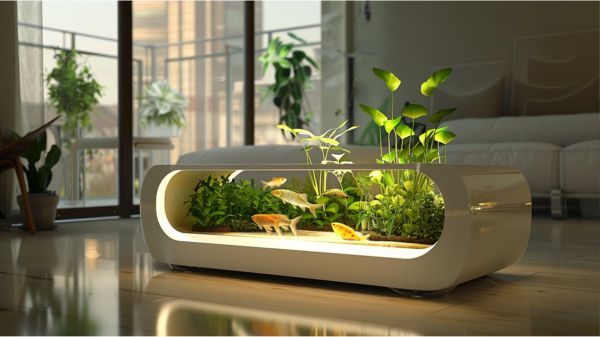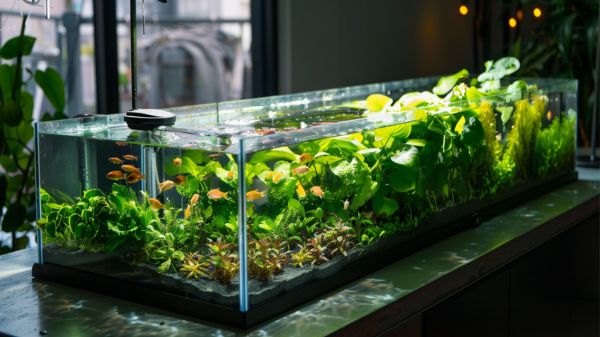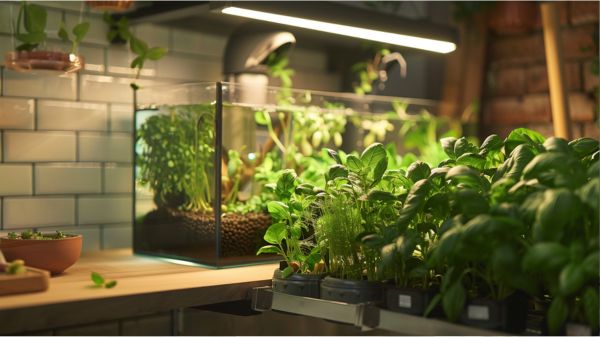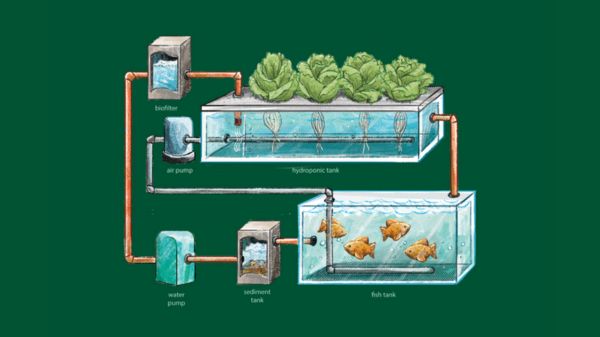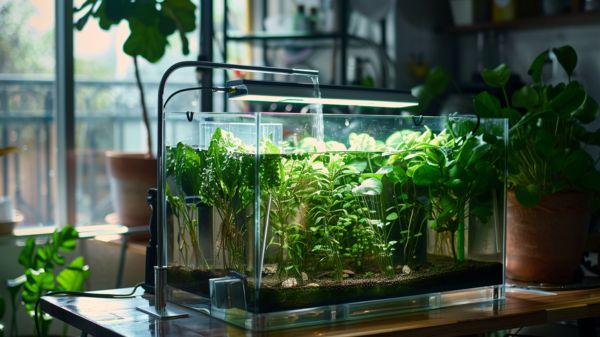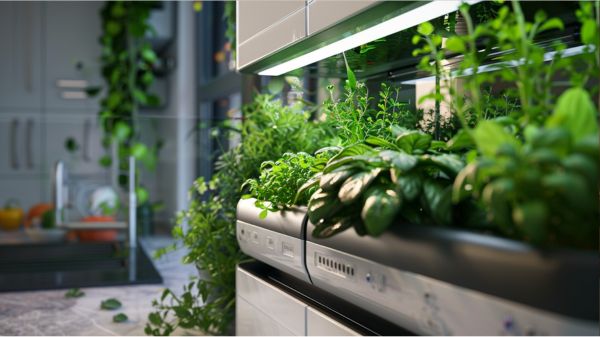Efficient Aquaponics Fish Tank Design Guide
Are you struggling to find the perfect fish tank design for your aquaponics system, constantly feeling like each choice leads to more confusion than clarity? What if there was a way to simplify this complex decision-making process and ensure your plants flourish while your fish thrive?
Imagine having access to a comprehensive guide that breaks down the essential factors to consider when designing an efficient aquaponics fish tank setup, guiding you towards making the best choices.
Let’s explore how the right fish tank design can transform your aquaponics experience into a seamless and successful endeavor.

Key Takeaways
- Choose a rectangular tank for efficient water flow and waste removal.
- Opt for a larger tank size to enhance nutrient circulation and accommodate more fish and plants.
- Consider acrylic for durability, glass for clarity, or plastic for affordability.
- Ensure easy cleaning with proper access hatches, drain valves, and regular equipment maintenance.
Factors to Consider When Choosing Fish Tank
When choosing a fish tank for your aquaponics system, consider various factors such as size, material, design, and maintenance features to ensure optimal plant growth and fish health.
The water tank’s material plays a vital role in its durability and aesthetics. Glass provides clarity, allowing you to observe your fish and plants clearly. Acrylic is lightweight and offers durability, while plastic tanks are affordable and easy to find. Fiberglass tanks are known for their durability, resisting wear and corrosion over time.
The design and shape of the tank shouldn’t only fit your space but also enhance the overall look of your aquaponics system. Opt for a tank with easy cleaning and maintenance features like access hatches, drain valves, and repairability to ensure the health of your fish and the efficiency of your system.
Related Post: 7 Best Aquaponic Betta Fish Tanks for a Beautiful and Sustainable Home Aquarium.
Optimal Size and Shape Selection
Consider the nutrient availability for your plants, the comfort of your fish, and the support needed for plant growth when selecting the optimal size and shape of your aquaponics fish tank.
The fish tank size plays a crucial role in the efficiency of your system. Opt for larger tanks if you aim to accommodate more fish and plants, enhancing nutrient circulation. Rectangular tanks are popular due to their efficient use of space, promoting better water flow and waste removal.
The shape impacts water circulation efficiency and overall system performance significantly. Additionally, consider the material choice for tank durability, clarity, and maintenance requirements. Different materials like glass, acrylic, plastic, or fiberglass offer varying levels of durability and aesthetics.
Your selection influences the tank’s longevity and the system’s visual appeal. Ensure your tank size and shape align with your aquaponics goals, balancing practicality with system performance effectively.
| Aspect | Consideration | Importance |
|---|---|---|
| Fish Tank Size | Influences nutrient availability and system efficiency | High |
| Tank Shape | Affects water circulation and waste removal efficiency | Medium |
| Material Choice | Impacts durability, maintenance, and system aesthetics | High |
Material and Durability Considerations
For enhanced durability and material suitability in your aquaponics system, prioritize evaluating the quality of construction, corrosion resistance, ease of cleaning, and repairability when selecting the fish tank for optimal performance.
Glass tanks provide excellent transparency for monitoring fish and plants but are fragile, commonly used in small-scale indoor setups.
Plastic tanks, on the other hand, are cost-effective, durable, and easy to clean, making them a preferred choice for aquaponics systems.
If you require a tank for holding large water volumes, Rubbermaid stock tanks are ideal due to their durability and heavy-duty construction, although they lack transparency.
IBC (Intermediate Bulk Container) totes offer a cost-effective and durable option made of industrial-grade plastic; however, they may be challenging to clean and also lack transparency.
When considering the material for your fish tank, ensure it possesses the necessary corrosion resistance, as well as being easy to clean and repair to maintain the longevity of your aquaponics system.
Cleaning and Maintenance Tips
To maintain the optimal functioning of your aquaponics system, regular monitoring of water quality parameters such as pH, ammonia, nitrite, and nitrate levels is crucial. Here are some cleaning and maintenance tips to ensure your fish tank operates efficiently:
- Implement a proper fish tank cover and shading to maintain the biological balance.
- Ensure easy access for cleaning and maintenance with features like drain valves and access hatches.
- Utilize test kits to monitor water quality and make necessary adjustments accordingly.
- Regularly clean tank equipment to prevent build-up and ensure smooth operation.
- Monitor water temperature to provide the ideal environment for your aquatic life.
Location and Placement Guidelines
Maintaining an optimal location and placement for your aquaponics system is essential for its efficiency and longevity. When setting up your aquaponics system, consider indoor setups for better climate control and protection against weather and pests.
Evaluate the need for supplemental lighting in indoor setups to ensure optimal plant growth. It is crucial to provide adequate structural support for stability and easy access during maintenance tasks. Place the fish tank in proximity to utilities such as water sources and electrical outlets for operational convenience.
Plan for protection against extreme weather conditions to maintain system functionality. Ensuring climate control and pest protection are vital aspects to consider for the overall health of your aquaponics system.
| Location Guidelines | Placement Guidelines |
|---|---|
| Opt for indoor setups for climate control | Place fish tank near utilities for convenience |
| Consider supplemental lighting for plant growth | Ensure structural support for stability |
| Protect against weather and pests | Plan for climate control and system functionality |

Frequently Asked Questions
What Is the Best Tank Design for Aquaponics?
For the best aquaponics tank design, choose a material like durable acrylic or glass for clarity. Consider tank size for nutrient distribution, fish comfort. Opt for a cylindrical shape for efficient water circulation and waste removal. Prioritize ease of maintenance for optimal system functionality.
How Big of a Fish Tank Do I Need for Aquaponics?
For aquaponics, the size of your fish tank matters. Consider tank size, fish population, water quality, and plant growth needs. Balance nutrients, control temperature, maintain oxygen, and filtration. Adequate lighting and stocking density support a thriving system.
What Is the Most Efficient Aquaponic System?
For the most efficient aquaponic system, consider the media bed setup. It excels in mineralization, waste management, and nutrient distribution. With proper maintenance, these systems yield abundant fish and plants while optimizing nutrient cycling in a closed-loop.
Why Is Aquaponics Not Profitable?
To make aquaponics profitable, consider market demand, labor costs, initial investment, crop selection, fish feed, water quality, energy consumption, pest control, seasonal fluctuations, and marketing strategies. Addressing these factors can enhance profitability in your aquaponic venture.
Related Post: DIY Aquaponics Fish Tank: 5 Steps to Create Your Own System.
Conclusion
When selecting your aquaponics fish tank, remember to consider the optimal size, shape, material, and durability. Keep in mind cleaning and maintenance tips, as well as location and placement guidelines.
By carefully evaluating these factors and making informed decisions, you can create a sustainable and efficient aquaponics system that promotes plant growth and ensures the well-being of your fish. Choose wisely, plan diligently, and watch your aquaponics setup flourish.
